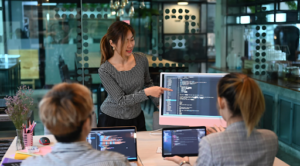Unleashing AI’s True Potential: The Indispensable Human Touch

The global market for artificial intelligence (AI) is experiencing a significant boom, with a twenty-fold increase expected by 2030. While AI has made impressive strides, it still requires human intervention to prevent costly errors and achieve its full potential. AI incidents and controversies have increased twenty-six-fold since 2012, highlighting the limitations of AI and the need for human intelligence.
Despite advancements in artificial intelligence applications, no platform has passed the Lovelace Test, which measures an AI’s ability to create something unexpected or unexplained by its human creators. AI cannot replicate human soft skills such as creativity, empathy, and teamwork. As such, major world leaders and technology experts are calling for more caution in AI development.
Sam Altman, CEO of OpenAI, envisions AI as a co-pilot, augmenting humanity’s power, creativity, and will. Fei-Fei Li, Sequoia Capital Professor of Computer Science at Stanford University, emphasizes that AI is created by humans, for humans, and impacts human lives and society. Artificial intelligence’s potential can be unlocked by harnessing the human element, including multitasking, discernment, moral decision-making, empathy, and creativity.Fostering creativity and adaptability in artificial intelligence requires humans to ask essential questions about focus, curation, and criteria. Google’s 2009 ReCAPTCHA project, which digitized its book archive with human assistance, exemplifies the successful collaboration between human intelligence and AI. By embracing human-centric commands and interaction, we can unlock artificial intelligence’s true potential and shape a brighter future.

Source: Academic Influence







